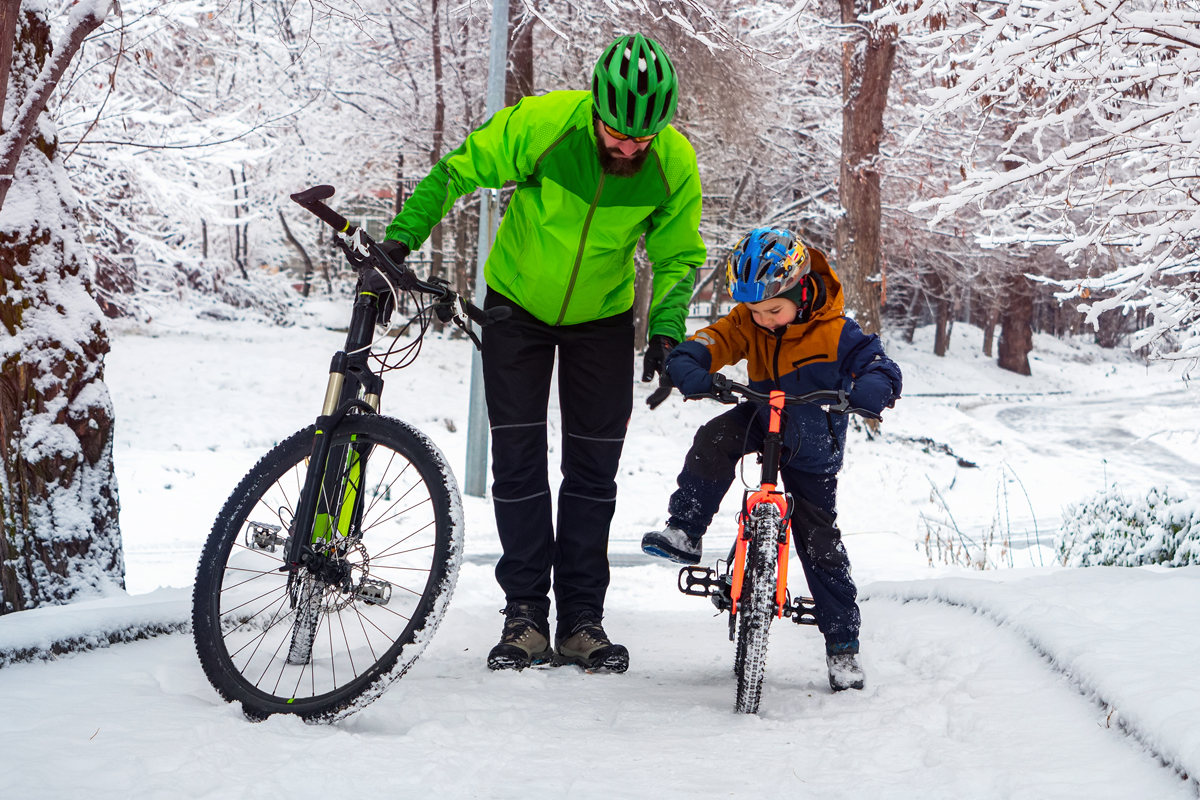Cycling in cold weather can be just as much fun as in summer if you prepare properly. Proper preparation includes choosing the right gear, setting up your bike and planning your route properly. Let’s take a closer look at these points.
Equipment for cycling in cold weather
When preparing for a cold-weather cycling trip, special attention should be paid to equipment that will ensure comfort and safety on the road.
Helmet and protection
A helmet is a must for safety in winter, when roads can be slippery. It’s also worth considering additional protective gear such as kneepads and elbow pads if you plan to ride on challenging trails or mountain biking.
Special accessories
Goggles can protect your eyes from wind, snow and UV rays. This is especially important if you plan to ride in sunny weather. It is important to choose glasses with antifog function to avoid fogging.
Backpack
A handy backpack or bike bag is useful for storing extra items such as a thermos with hot drinks, food, bike repair tools and spare items. Look for models with water-repellent impregnation to keep the contents dry in case of rain or snow.
Navigation
If you’re planning long rides, it’s a good idea to have a GPS device or smartphone with maps and cycling apps installed. This will help you not get lost.
Repair tools
Be sure to carry a bike repair kit, including a spare tube, pump and multitool. During the winter, the chances of punctures and other malfunctions increase.
Setting up your bike for cold weather riding
Low temperatures and humidity can affect your bike’s performance, so it’s important to take the time to set up your bike properly.
Winter tyres
Winter roads can be slippery if ice or snow appears on the roads. It is recommended to use tyres with more aggressive tread for better traction. You can also lower the tyre pressure slightly – this will increase the contact area and improve traction.
Brakes
Wet and cold weather can affect the braking system. Check the condition of the pads and discs regularly to make sure they are in good condition. Disc brakes are better for winter conditions as they are less affected by moisture.
Chain lubrication
In winter, chain lubrication must be more resistant to moisture and dirt. Regular cleaning and lubrication of the chain will help prevent corrosion and premature wear.
Lighting and reflectors
During the colder seasons, daylight hours are shorter and journeys can often take place in low visibility conditions. Make sure you have bright front and rear lights and reflectors on your bike.
Route planning
Another important aspect of preparing for cold weather cycling is careful route planning. Roads in winter can be unpredictable and weather conditions can be changeable.
Roads with heavy traffic
Drivers may be less careful on slippery roads in cold weather. Avoid roads with heavy traffic. It is better to take quieter, safer routes where there is less traffic.
Weather conditions
Check the weather forecast before each journey. Avoid travelling in heavy snowfall, ice or blizzards. It is important to know how the weather may change during your journey so that you do not find yourself in a difficult situation away from home.
Short stops
Cold journeys may require periodic stops to regain warmth. Plan your route so that you can take a break in a warm place, such as a café or shop.
Visibility on the road
In low visibility conditions due to snow or rain, or in the evening, it is important to be as visible as possible. Use luminous clothing and additional reflective elements.
By following these tips, you can enjoy cycling even in the coldest conditions and stay warm and safe.


